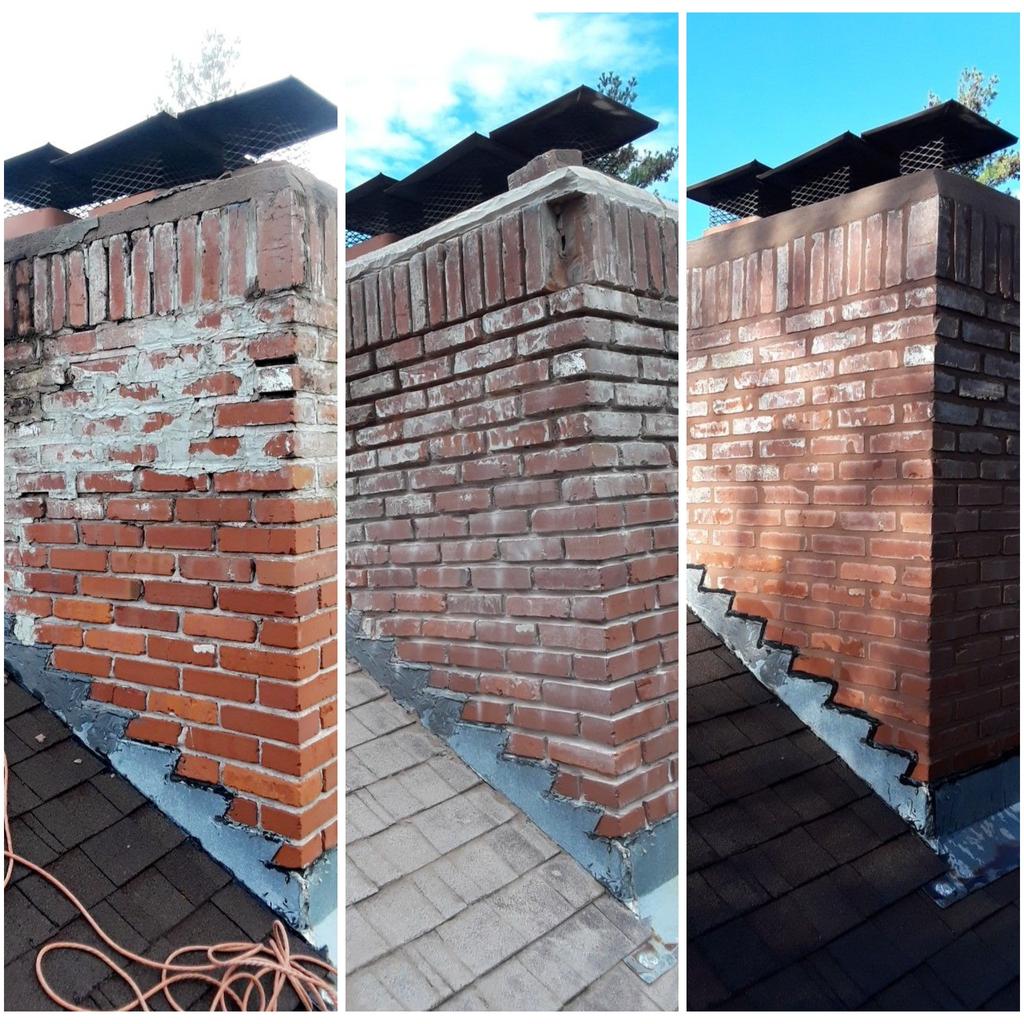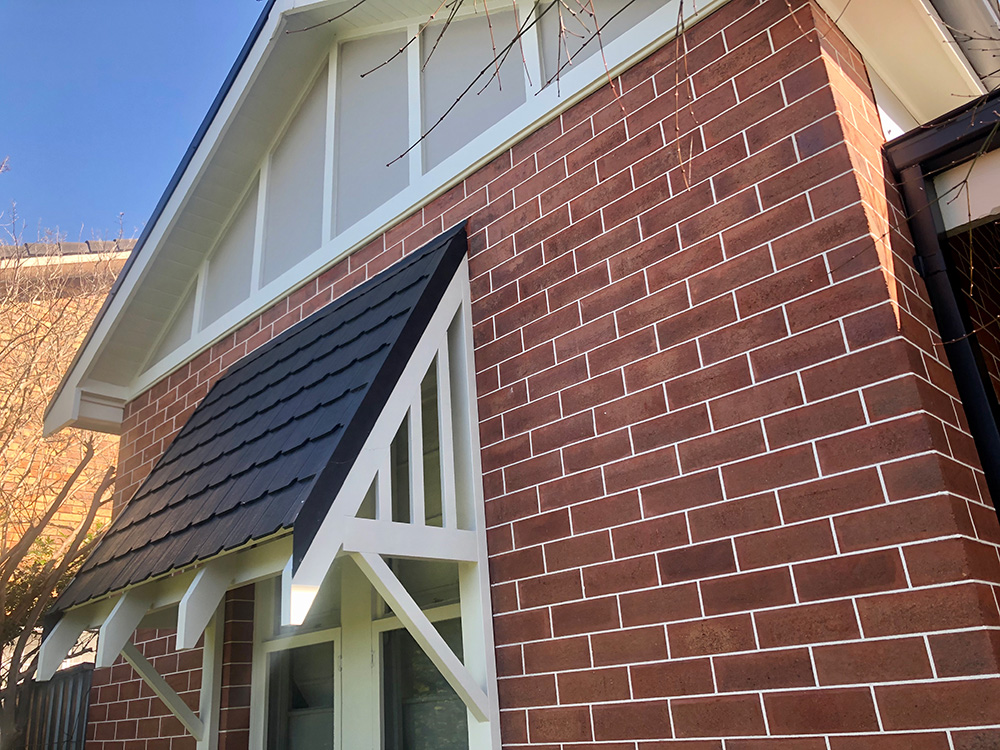Safeguard Your Financial investment with Raul's Tuckpointing St. Louis MO Providers: Relied On Masonry Fixes
Safeguard Your Financial investment with Raul's Tuckpointing St. Louis MO Providers: Relied On Masonry Fixes
Blog Article
Enhance the Appeal and Sturdiness of Your Brickwork With Tuckpointing
Brickwork has long been respected for its timeless elegance and longevity. Over time, the mortar that holds those blocks together can deteriorate, leaving your framework at risk to harm and taking away from its visual charm. Fear not, for there is a solution that can restore both the elegance and longevity of your brickwork: tuckpointing. This olden method not just improves the aesthetic appeal of your brickwork, but likewise strengthens its structural stability. Yet what specifically is tuckpointing and how does it vary from repointing? And just how can you make sure that your tuckpointed brickwork stays in excellent condition? In this discussion, we will check out the fundamentals of tuckpointing, its benefits, the distinction between tuckpointing and repointing, the procedure itself, and the crucial techniques for caring and maintaining for tuckpointed brickwork.
The Basics of Tuckpointing
Tuckpointing is a competent strategy utilized to improve the appearance and repair and structural honesty of brickwork. It entails the process of removing tatty mortar joints and replacing them with fresh mortar. The term "tuckpointing" refers to the method of using 2 different colors of mortar to produce the impression of great joints, giving the brickwork a much more refined and cosmetically pleasing look.
The very first step in tuckpointing is to carefully analyze the problem of the brickwork. This includes examining the mortar joints for indications of deterioration, such as cracking, crumbling, or missing out on mortar. Once the trouble locations have actually been recognized, the old mortar is meticulously eliminated making use of specialized tools, such as a mill or sculpt, while making sure that the blocks themselves remain undamaged.
After the old mortar has actually been gotten rid of, the following action is to prepare the joints for fresh mortar. This normally includes cleaning up out any particles or loosened product and moistening the joints to make sure correct bond. A competent tuckpointer utilizes an aiming trowel to thoroughly load the joints with fresh mortar, making certain to produce a consistent and flush surface area.
Advantages of Tuckpointing
Improving both the long life and appearance of brickwork, tuckpointing offers a number of significant benefits for house owners and building owners alike. By replacing deteriorated mortar joints, tuckpointing stops dampness from leaking into the brickwork, which can lead to structural damages over time.
Another advantage of tuckpointing is its capacity to enhance the visual charm of block structures. Gradually, mortar joints can end up being cracked, discolored, or stained, detracting from the total appearance of the brickwork. Tuckpointing entails meticulously getting rid of the harmed mortar and replacing it with fresh mortar of a contrasting color. This strategy permits the development of tidy, crisp lines that offer the illusion of properly maintained brickwork. It can likewise be utilized to develop decorative patterns or layouts, even more boosting the visual charm of the structure (Raul's Tuckpointing St. Louis MO).
In addition to improving the long life and appearance of brickwork, tuckpointing can additionally raise the value of a home. Properly maintained brickwork is seen as a desirable feature by prospective purchasers and can dramatically boost the visual allure of a residential or commercial property. When the time comes to place the residential property on the market., this can lead to a higher selling price and a quicker sale.
Tuckpointing Vs. Repointing: What's the Distinction?

To compare tuckpointing and repointing, it is necessary to recognize the crucial differences in between these 2 techniques of brickwork remediation. While both techniques aim to maintain the structural integrity and aesthetic charm of brickwork, they differ in their method and execution.
Tuckpointing is a thorough process that involves using two various colors of mortar to create the illusion of great joints. This technique is mostly made use of to improve the visual charm of brickwork by producing the appearance of well-kept and well-crafted joints. The tinted mortar is very carefully applied and shaped to match the color and profile of the initial mortar, providing the perception of accuracy and craftsmanship.
On the other hand, repointing is a much more straightforward process that entails eliminating scrubby or broken mortar from the joints and changing it with fresh mortar. The key objective of repointing is to bring back the structural stability of the brickwork by guaranteeing proper bonding and sealing in between the blocks. Unlike tuckpointing, repointing does not entail making use of tinted mortar or the creation of a decorative impact.
The Process of Tuckpointing
The application of 2 various colors of mortar to create the illusion of great joints is a careful process called tuckpointing. This technique involves eliminating shabby mortar joints and replacing them with new mortar to improve the look and architectural honesty of the brickwork. The procedure of tuckpointing can be divided right into several actions.
First, the old mortar is meticulously eliminated utilizing specialized tools such as mills and blades. It is very important to get rid of the mortar to an enough deepness to ensure a solid bond with the brand-new mortar.
Following, the joints are completely cleaned to get rid of any kind of debris or dirt. This assists to produce a tidy surface area for the brand-new mortar to follow.
As soon as the joints are cleaned, a slim layer of new mortar is used go to the joint making use of a small directing trowel. This preliminary layer, called the "aiming up" mortar, is usually the very same shade as the existing mortar.
After the preliminary layer has been applied, a 2nd layer of mortar is applied in addition to it. This second layer, called the "fillet" mortar, is a various color and is carefully shaped to produce the illusion of a great joint.

Caring and maintaining for Tuckpointed Brickwork
Once the tuckpointing procedure is finished, proper upkeep and care are vital to protect the improved appeal and durability of the brickwork. This upkeep not just makes sure that the tuckpointed locations stay intact and functional yet also aids to stop any prospective damage to the general framework.
One of the key aspects of keeping tuckpointed brickwork is regular cleaning. This entails removing any type of dirt, particles, or moss that might gather externally of the blocks. A soft brush or a low-pressure power washing machine can be utilized for this function. It is necessary to avoid using any extreme chemicals or rough devices that can possibly damage the mortar or the bricks themselves.
Along with cleansing, it is necessary to evaluate the tuckpointed locations periodically. This enables the very early detection of any indicators of wear and tear or damage. Any fractures, loosened mortar, or signs of water damage ought to be dealt with immediately to avoid more degeneration.
Additionally, guaranteeing appropriate water drainage around the brickwork is essential. Water pooling or improper drain can cause moisture penetration, which can weaken the mortar and create structural damages. Clearing seamless gutters and downspouts frequently and making sure that they are effectively routed far from the brickwork can aid avoid these concerns.
Finally, it is advised to talk to a specialist tuckpointing specialist for regular maintenance and fixings. Their know-how and experience can make certain that any required repair services are done appropriately, maintaining the integrity and long life of the tuckpointed brickwork.
Conclusion
In verdict, tuckpointing is an important strategy for enhancing the beauty and resilience of brickwork. Tuckpointing involves the removal and replacement of scrubby mortar, resulting in a tidy and consistent appearance.
It includes the process of eliminating tatty mortar joints and changing them with fresh website here mortar. Raul's Tuckpointing St. Louis MO.After the old mortar has been removed, the following step is to prepare the joints for fresh mortar. Tuckpointing includes meticulously eliminating the damaged mortar and changing it with fresh mortar of a contrasting color. The tinted mortar is very carefully applied and formed to match the read what he said shade and profile of the initial mortar, offering the perception of precision and workmanship

Report this page